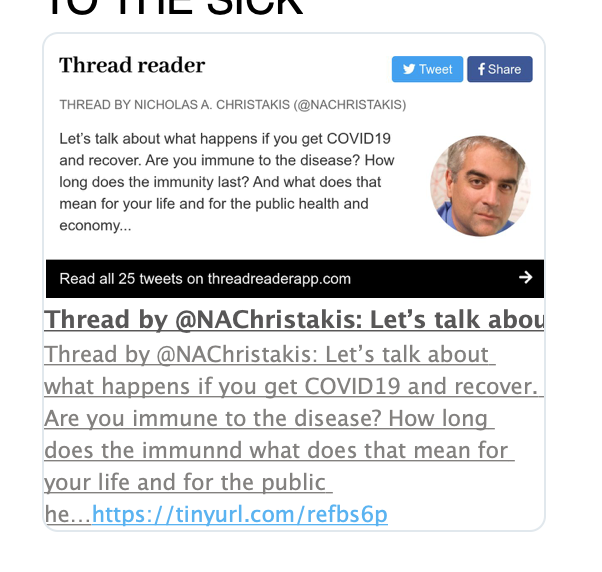• Stay at home as much as possible.
• Work from home whenever possible.
• Encourage socializing by phone and video chats.
Continued
• Engage in appropriate social distancing, including:
— maintaining a 6-foot distance at all times from other individuals when in public;
— not visiting friends or family without urgent need;
— not attending any gathering of any number of people, except for members of the same household or residence.
Limit physical interactions with high-risk individuals.
Limit visits to hospitals, nursing homes, and other residential care facilities.
Do not attend school outside the home.
Do not arrange or participate in in-person playdates or similar activities.
Do not allow children on public playground equipment.
“We know the hardest hit area of our economy is probably our hospitality industry.”
Do not dine out except for carryout or delivery. Many restaurants are making these accommodations.
Schools may send home food.
Maintain a distance of at least 6 feet away from another person at all times while outside.
Exercise outside while maintaining 6-foot distance from another person and without touching common areas.
Do not congregate at trailheads and other outdoor spaces.
Do not travel to, or participate in activities at, any of the following locations:
— places of public amusement or public activity;
— public swimming pools;
— gyms, and fitness centers.
Limit travel only to essential travel.
That means:
— safely relocate an individual whose home or residence is unsafe
— care for a family member or friend in the same household or another household, including transporting family members or friends;
—transporting a child according to existing parenting time schedules or other visitation schedules pertaining to a child in need of protective services;
— care for pets
— seek emergency services; medications and medical services;
— obtain food, including delivery or carry-out services, beverages (alcoholic and non-alcoholic)
— obtain other grocery items, gasoline, supplies required to work from home, and products needed to maintain the safety, sanitation, and essential operation of homes
• Consider how best to decrease the spread of COVID-19 and lower the impact in the workplace.
• Encourage and help employees and volunteers to telework from home
• Implement policies for employees and volunteers who cannot telework
• Be prepared to change business practices if needed to maintain critical operations.
• Accommodate high-risk individuals in the workplace.
Local health departments and local elected officials may make different and enhanced measures if appropriate and necessary.
This will help us recover quickly and grow the economy.

A: The difference is one of emphasis and reinforcement. This is an opportunity to re-commit.
A: Stay safe/Stay home is easier to understand than shelter in place. We emphasize what you CAN do.
Businesses can continue to stay open if they meet the criteria.
We can be more aggressive if needed.
A: We are trying to get the best outcome for both public health and the economy.
A: Yes. If it’s appropriate and needful. We hope we can see and show how public health May improve through this directive.
It’s a call to action for all of us.












